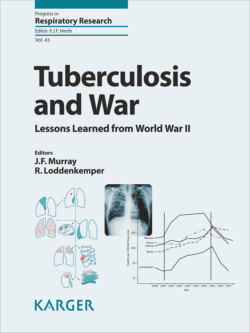Читать книгу Tuberculosis and War - Группа авторов - Страница 53
На сайте Литреса книга снята с продажи.
Tobacco Smoking
ОглавлениеA potentially large population-attributable fraction of TB might be related to smoking. However, smoking cannot be clearly established as a risk factor for TB because of the multitude of potentially confounding factors (notably socio-economic ones which are co-shaping the TB epidemic, independent of smoking habits) that tend to interfere with a clean etiologic analysis. An early case-control study nested into the large British cohort study on smoking examined the relationship between smoking and TB and found a dose-relationship, a finding that always enhances the credibility of and strengthens the case for postulating causality [33]. Since this early study, a multitude of cohort studies have added to the evidence base and established increasingly the veracity of establishing smoking as an independent risk factor for the progression from latent infection with M. tuberculosis to TB. The potential of increased smoking burden contributing to increased TB incidence is thus discussed in the following. However, it should be kept in mind that the overall differential population-attributable fraction might have been fairly modest.
Tobacco smoking is a risk factor for both pulmonary and extrapulmonary TB [34, 35]. Several pathogenetic mechanisms have been discussed, though the main cause is most likely the suppression of the immune defense against M. tuberculosis[36]. Cigarette consumption increased considerably during WWI and even more so in WWII, in particular in the military [37, 38]. Thus, it is possible that active and passive cigarette smoking played an additional role in the TB epidemic during WWII, although this is not mentioned specifically in the literature.
